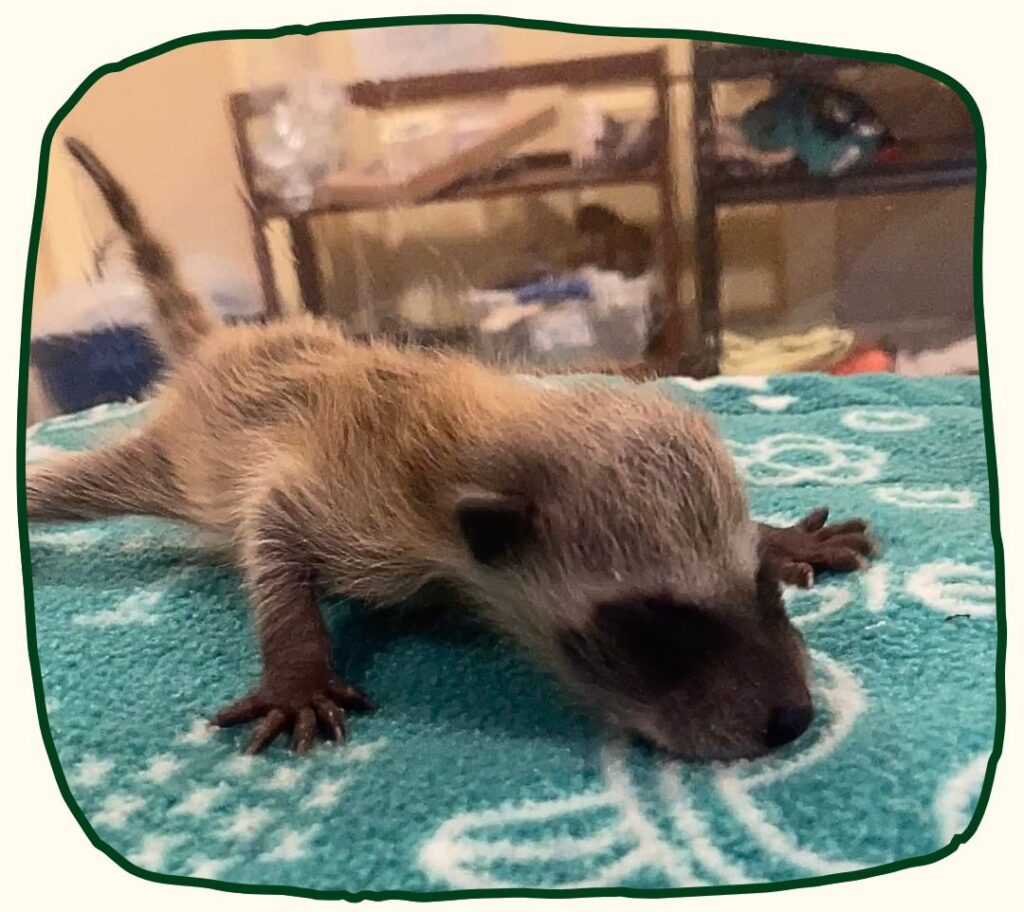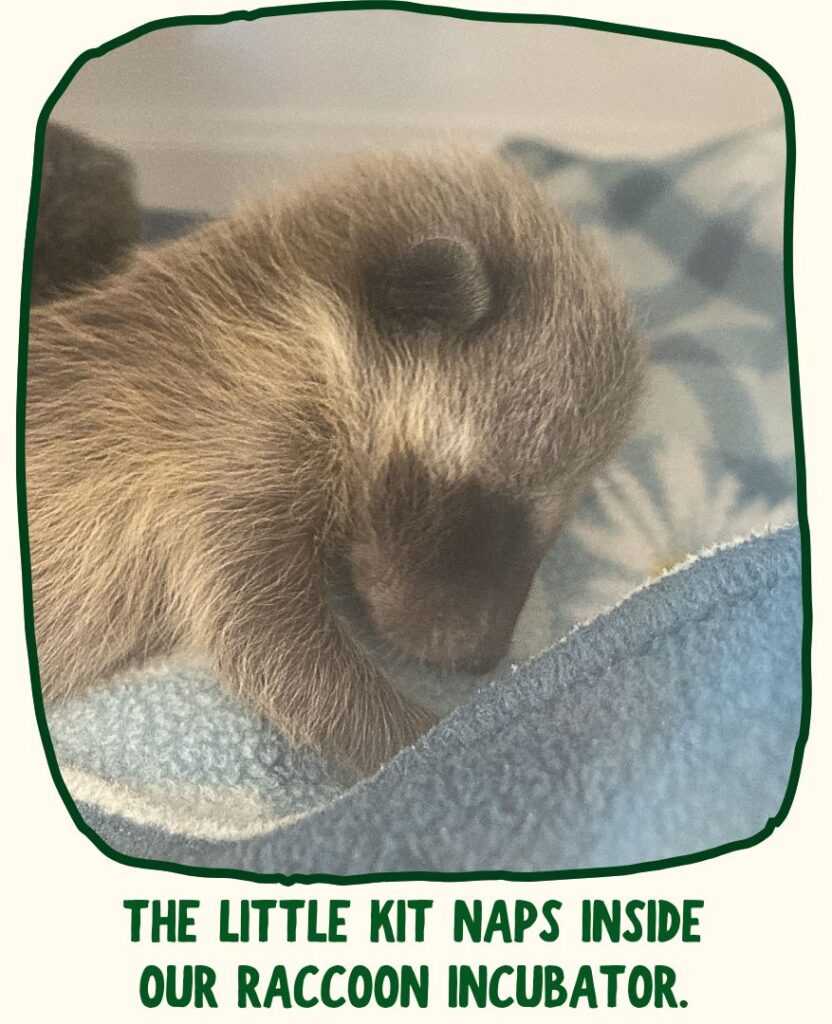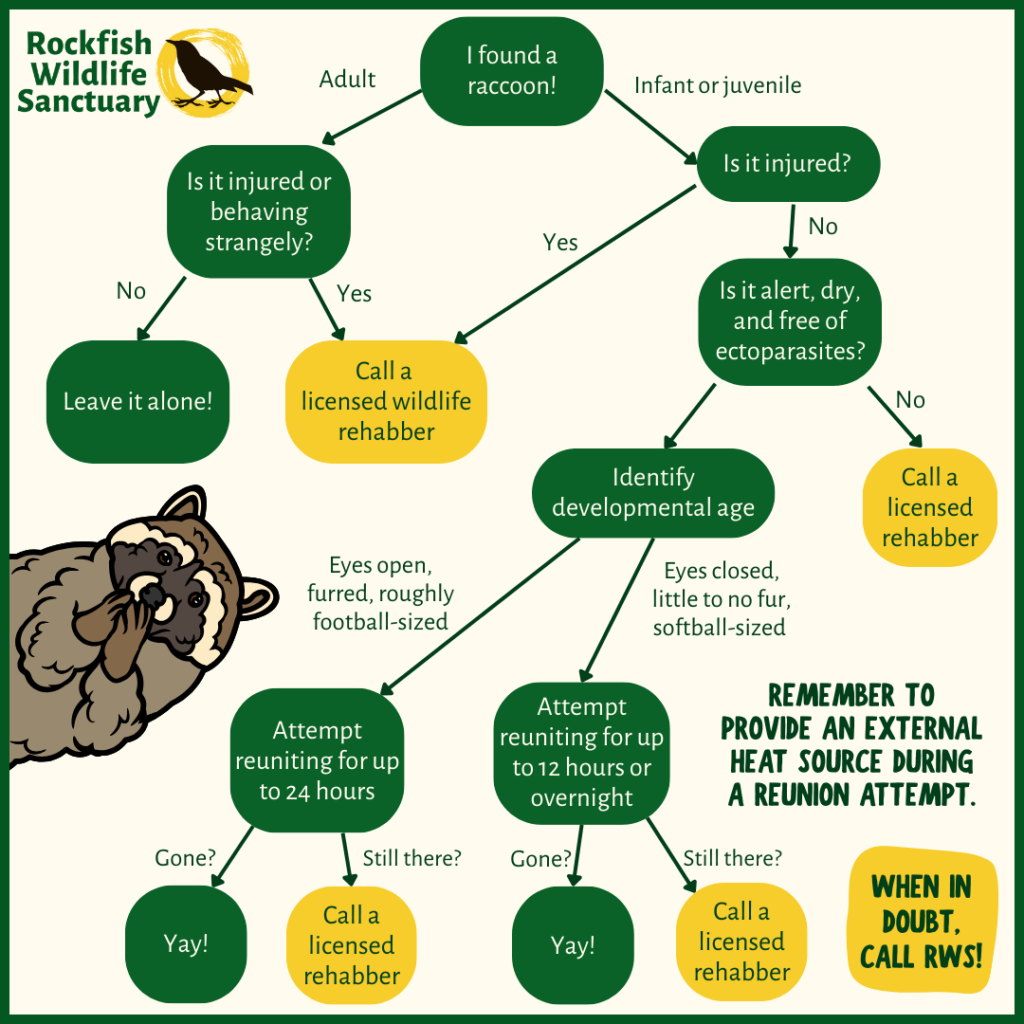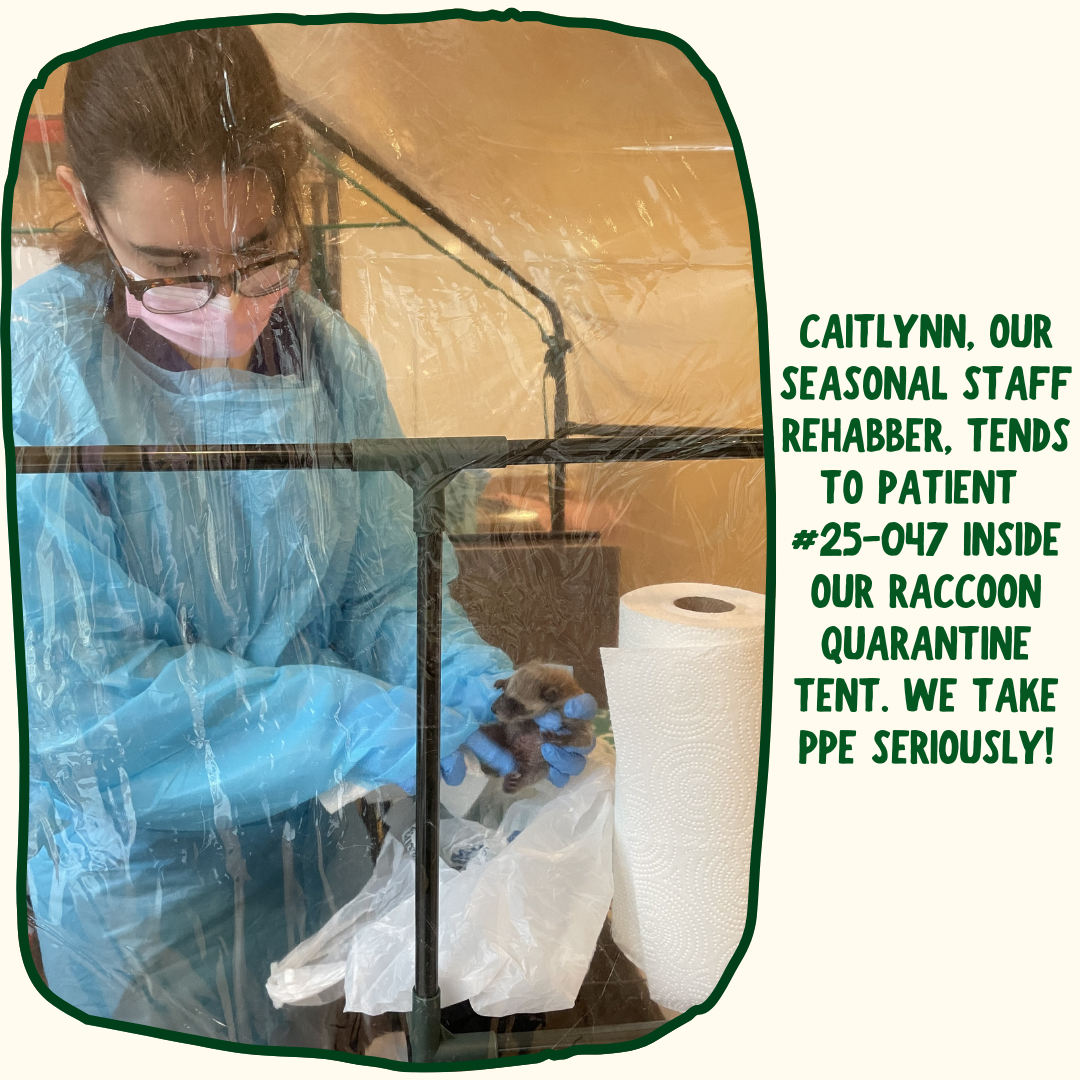Ah, spring at the Sanctuary! Flowers are blooming, birds are chirping, and our wildlife rehabbers are frequenting our coffee maker. 😆☕️ That’s right: baby season is in full swing. As temperatures rise and animals begin raising their young, we’re seeing a familiar wave of “firsts” roll in: the first squirrels, the first baby cottontails, and, of course, the first raccoon kit. 🦝
That title goes to patient #25-047, a tiny male raccoon who arrived late last week. His story is an important one to tell, because it’s quite possible he was never actually orphaned in the first place.

Raccoon Kit Rescue?
This little raccoon kit was discovered all the way down in Pittsylvania County. A community member found him alone in her attic, quietly tucked into insulation. Though alarming for most folks to encounter, as rehabbers, we know this is a common situation and not typically cause for alarm.
This kit was probably not actually abandoned. Rather, his mother had likely been in the middle of moving her kits to a secondary nest location. Raccoon mothers have multiple den sites, and they move their kits between them if they feel their current den is unsafe or has been disturbed. Since these tough moms raise their babies all on their own, they’ve only got one mouth to move those kits with. One by one, she’ll carry her babies to her new location, leaving the remaining kits tucked away safely until she can relocate them all. Moving her babies between dens may take from a few hours to several days. ⏳
Sadly, the community member did not try to reunite this baby with his mom. She did not want to wait for mom to come move the baby from the attic, nor did she try to leave the kit outside with a heat source where mom could still access the baby and take him away. Instead, she kept the kit in her house and fed him kitten milk replacer for two days before contacting a licensed rehabber.

How & When to Help A Raccoon Kit
We understand how hard it is to see a baby animal alone and not feel compelled to help. But the best help, in many cases, is giving wild mothers a chance to finish what they’ve started.
At RWS, we always encourage concerned rescuers to contact us before intervening. We’re here to guide you through how to safely attempt reunification and when it’s time to intervene. For Raccoon #25-047, the window had unfortunately passed. After two days on an unsuitable diet and away from his family, he needed professional help. A volunteer transporter kindly transported him to the Sanctuary.
When and how should you attempt to reunite a baby mammal? We made the flow chart below to help you navigate a potential orphaned raccoon situation. Keep in mind that these steps are largely applicable to most mammals—besides the size comparisons. A football-sized mouse would be quite remarkable. 🤣
Reuniting babies is often as simple as leaving them where you found them, assuming they are uninjured and responsive. You might elect to put the baby in a shallow box to prevent it from moving around too much, as long as mom can still get into the box and easily pull the baby out. For smaller babies, leave an external heat source beside them. This could be a hot water bottle, instant hand warmers, or a microwaved sock full of uncooked rice wrapped in a towel to prevent burns. 🧦

Raccoon Kit Rehab Considerations
Though reunification was not an option for #25-047, we are happy to have the first raccoon kit of the season in our care. We look forward to giving him the second chance he deserves.
Raccoons like him are uniquely challenging yet rewarding patients to care for. These critters require strict biosecurity protocols not just because they are a highest-risk rabies-vector species in Virginia. They also can carry Baylisascaris procyonis. This zoonotic parasite, commonly called raccoon roundworm, poses serious health risks to humans and other wild animals.
What makes raccoon roundworm so hard to deal with is that its eggs can only be killed with heat. You probably don’t think about wildlife rehabbers needing to use flamethrowers, but it’s a part of the job! 🔥 That’s why raccoons need completely separate housing, dedicated equipment that can sanitized with a flamethrower or steam-cleaner, and careful waste management to prevent cross-contamination.
Our Quarantine Set-Up
Given these important care considerations, RWS is one of just a small handful of rehabilitation organizations providing longterm care for orphaned raccoons in Virginia.
We take that responsibility very seriously. To keep our humans and other patients safe, we’re currently housing #25-047 in a raccoon greenhouse! Well, kind of. 😆 It’s a portable greenhouse inside of our rabies-vector species nursery, where staff don personal protective equipment (PPE) to reduce the risk of spreading diseases. We snapped a photo of our new seasonal employee, Caitlynn, caring for the teeny kit from outside of the tent. Though the raccoon quarantine greenhouse tent is a step above last year’s quarantine solution—a converted shed that lacked HVAC or a sink—it’s far from ideal.


That’s why this baby season, we’re hoping to undertake a major project: renovating our walk-out basement into three biosecure quarantine rooms. 🏠 One room will serve as a quarantine zone for new raccoon admits, one room will serve as a raccoon nursery for healthy kits who have cleared their quarantine period, and one room will house baby waterfowl so we can protect our facility and our other patients from Highly Pathogenic Avian Influenza (HPAI). This renovation will dramatically improve our ability to care for some of the most common species we admit, while strengthening our biosecurity protocols across the board.
The budgeted cost for our project’s full scope is $64,000. We would be honored to have your support towards this critical renovation!
What’s next for this little kit?
For now, raccoon kit #25-047 has adjusted well to rehabilitative care. With daily fluid therapy and proper nutrition, he’s already nearly doubled in weight since his arrival! Our next step is to find him a conspecific (same species) buddy with whom he can socialize and play. 💕
We are confident that another raccoon kit patient will soon arrive to keep this little one company. It’s baby season, after all! 🐣

April 16, 2025
Published:
Be the first to comment!